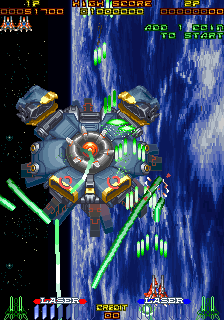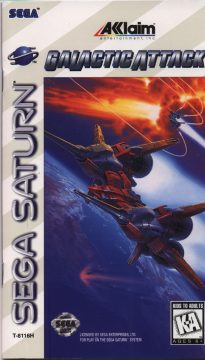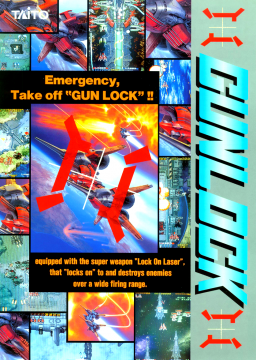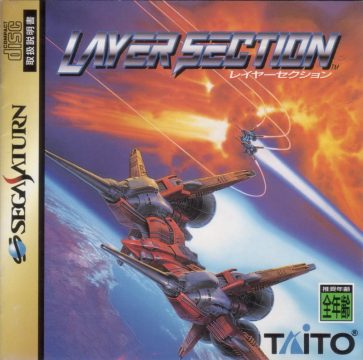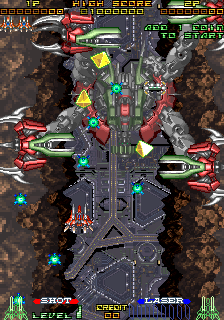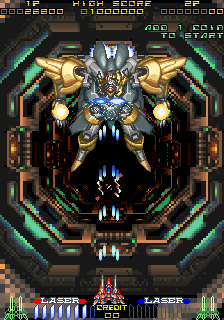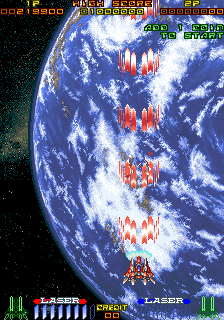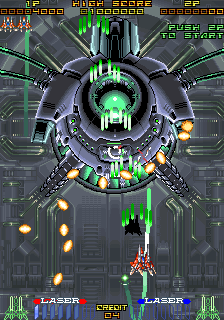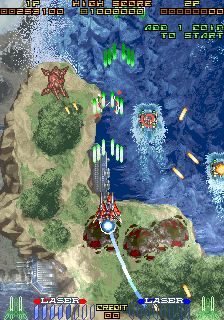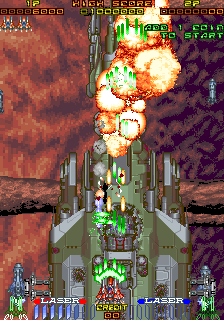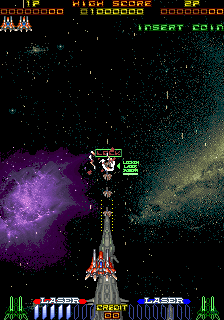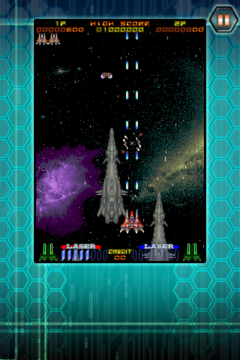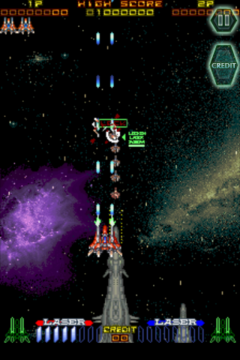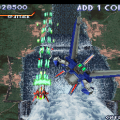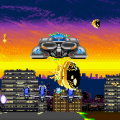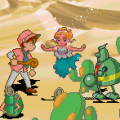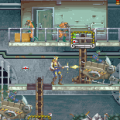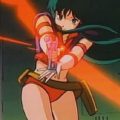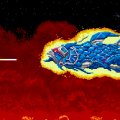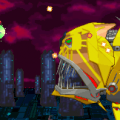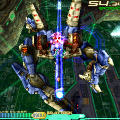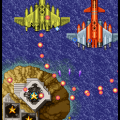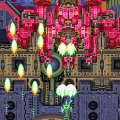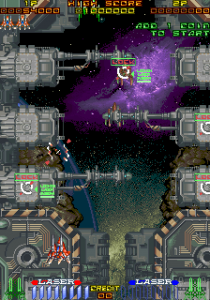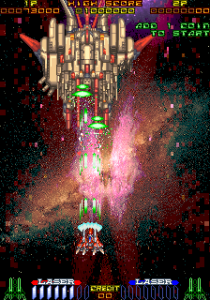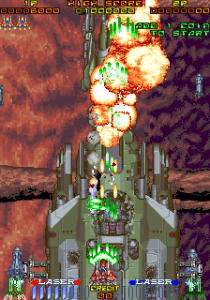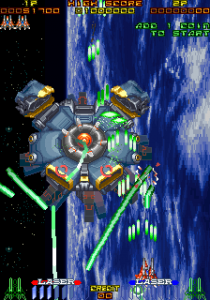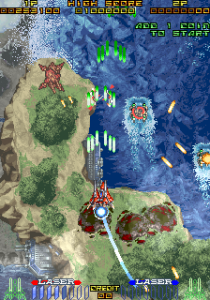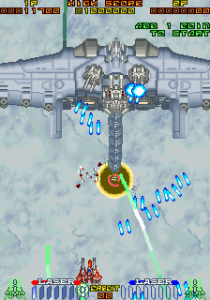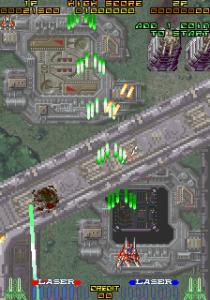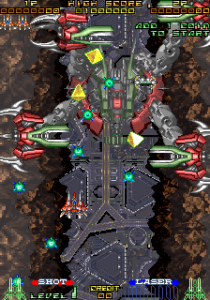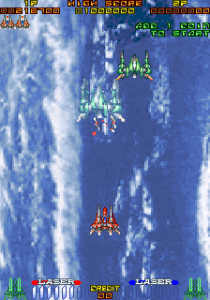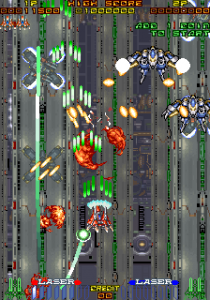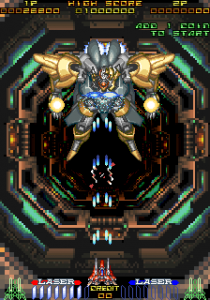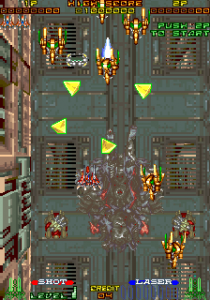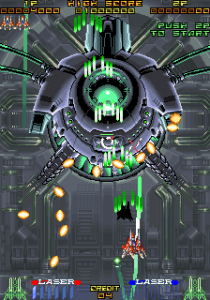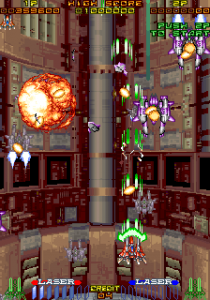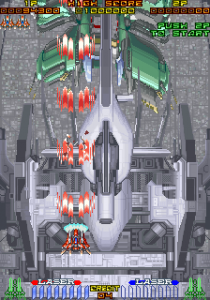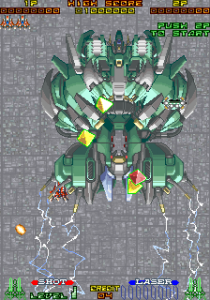Taito was one of the most diverse and innovative developers of ’80s and ’90s publishers. Celebrated for a diverse range of games in the arcade and home consoles, they have tried out many different genres. However, shoot-em-ups have often been one of their favored genres, as it was the ur-shoot-em-up, Space Invaders, which put them on the map. Along with further Space Invaders titles and other shooters such as Insector-X and Metal Black, their primary series would become the Darius saga, beloved for its massive widescreen arcade cabinets (at least for the first two games) and massive robotic boss designs derived from marine wildlife.
While Space Invaders is very much known even amongst non-gamers and Darius is a favorite for fans of the genre, their third-most prominent shooter series only reached three games which unfortunately remained somewhat obscure. The Ray- trilogy is one of Taito’s lesser-recognized series, but it certainly deserves attention for its overall impressive design and frantic action both ahead and below. The first game, RayForce, was released under various names in different localities, and it went on to create two respectable (albeit arguably not quite as awesome) sequels in RayStorm and RayCrisis.
As the first of the trilogy and arguably still the best, RayForce is one of the most impressive vertical shooters of the arcade scene and is still a marvel to behold today. It is somewhat ironic that a dazzling game has a horribly grim backstory beneath it. In the classic 2001-inspired “murderous artificial intelligence” plot, humanity screws up by entrusting its fate to a supercomputer dubbed Con-Human. While intended to regulate Earth’s environment, a cloned human somehow links with Con-Human’s infrastructure and causes it to lose its marbles. Con-Human causes natural disasters and replaces humans with evil clones modeled in the computer’s ideal image of perfection. 99.8% of all humanity is wiped out with the incredibly sparse remainder running off to space colonies as Con-Human remakes the ENTIRE Earth into its whole body.
This is bad, and it gets even worse when Con-Human sends out its nigh-infinite weapons to obliterate the trace remnants of humanity, ensuring that only its new lifeforms are all which exist. Humanity takes the counter-offensive and sends the RVA-818 X-LAY starfighter on a mission to terminate Con-Human by any means necessary. The goal is to break through Con-Human’s space armada and infiltrate earth’s stratosphere and surface, making your way to the newly-mechanized core where Con-Human itself awaits. It’s tantamount to suicide, but it’s the only hope humankind has left to rage against the machine and return to peace. Of course, this is the sort of stuff you wouldn’t guess by just looking at the game, but discounting the depressing backdrop, what we have here is a beautiful game running on Taito’s relatively new-at-the-time F3 graphical processor (the same graphical system as Darius Gaiden). Colorful nebulas and planetary horizons are expected for any space shooter, but RayForce really makes the atmosphere feel lively with all sorts of touches; asteroids that break off of large rocks, giant ships being torn apart (sometimes by you), collapsing towers and the like. Rotating and scaling effects are used liberally but not gratuitously, lending an almost three-dimensional appearance to the game sometimes.
Unbelievably, nearly everything is pure spritework, with the overall graphical style only being matched by Taito’s later Darius Gaiden. In short, RayForce looks gorgeous, and it also gets points for one of Zuntata’s (Taito’s in-house band) best ever OSTs. From the upbeat first level track (somewhat dubiously named “Penetration”) to the more solemn second stage (“G”), the adventurous third (“Vision”), the suspenseful fourth (“Cracking”) and so on, each tune fits their corresponding stage to veritable perfection. Ranging from mellow to intense, positive to dramatic and many other styles and tempos, the music really adds to the atmosphere and course of progression. The music for the whole series was provided by former Capcom composer Tamayo Kawamoto.
RayForce is structured in the exact opposite way of the Raiden series, which usually starts on Earth then moves out to space. Since Con-Human has corrupted Earth, you actually start out in space and move deeper towards and into the evil computer’s new Earth until you reach the core. A subtle but neat touch is how each level has a rolling sense of continuity. Not once does the screen fade to black and put you in the next level from there, but you just roll right into the next stage after conquering each boss. If you quit in the middle of a game, you’re even shown how close you got to the center of the Earth before you failed your mission and doomed humanity to extinction. There are just so many touches in RayForce‘s overall design that make it feel more engaging than most other shooters, standing head and shoulders above most other similar shoot-em-ups of the time which were merely content to just exist.
Beneath all the polish and shine is an excellent fast-paced shooter which is guaranteed to thrill and challenge nearly all players. RayForce plays akin to most overhead shmups of the time with an interesting twist in the mechanics that demands you pay attention to two different planes of action. Your primary shot button shoots rapid fire beams in front of you and serves as a strong weapon for oncoming attacks, but your secondary fire shoots off homing lasers which fly down to toast targets that you lock onto with a cursor positioned about two ship lengths in front of the RVA-818 X-LAY. These homing lasers are mostly reserved for ground units or enemy aircraft floating several meters below you, but some targets are so large (mostly bosses) that enough of their construct hangs low enough to be susceptible to your lock-on shots.
You can mash the lock-on button, but it garners far more points and is often more satisfying to wait and hover the cursor over several enemies and let loose when you have enough targets in your sights. You can tag up to five targets on base, but collecting a green “L” powerup gives you another lock-on laser up to a maximum of eight. Your main shot can also be souped up by collecting three red pyramid power-ups or a single yellow one, quite a few of which fly out if you die and are forced to continue.
The lock-on mechanic adds a new dimension (almost literally) to what would otherwise be a reasonably straightforward shooter. To be fair, it’s nothing new compared to older shoot-em-ups like Xevious and Legendary Wings, where enemies on the ground need to be destroyed by dropping bombs instead of hitting them with your normal shot. That being said, there’s an impressive amount of crap that goes on one hundred meters below you, whether it’s formations of ships rising up to meet your level or multiple turrets trying to knock you out of the sky. Action in the near plane gets so frantic that it’s easy to ignore what’s going on in the far plane which is ALSO just as nuts. One of the only other shoot-em-ups that matches up to RayForce‘s play style and intensity is Raizing’s Terra Diver / Soukyuugurentai, but it was made approximately three years later and perhaps owes some of its influence to RayForce as an indirect precursor.
On top of its gameplay being fun, RayForce is also quite simple. You only get your forward gun and your lock-on lasers, contrasting with other shmups that offer you about eight to a dozen different subweapons and power-ups, some of which you may not even want to pick up. RayForce only requires that you dodge, shoot forward, and shoot below to win, which is about as blood simple as a shmup can get. However, survival is not guaranteed, and the game gets increasingly vicious the farther in you go. Enemy forces grow more numerous and intimidating, as well as each boss being tougher than the last.
Naturally, there are lots of great boss fights to be had, starting from the battleship-mech hybrid you fight in the first level while hurtling through crimson stardust. The next stage pits you against a large donut-like ship whose core only shows through when you damage the chassis enough to turn it into a wireframe model. After that is a fearsome fighter jet whose core is actually found at the end of a large metal appendage dangling in the clouds below you. These fights get tougher the farther in you travel to Con-Human’s mind, and the stages themselves become longer while even the cannon fodder becomes more of a pain to destroy. On top of all this is an invisible “Rank” system which notches up the difficulty ever-so-gradually the longer you go without dying.
RayForce has the whole package for shooter fans with top-notch graphics, music, gameplay, and challenge. To top it all off, two players can tear up the Con-Human armada simultaneously. Both ships start out with one less lock-on laser and the enemy resistance is a bit tougher, but finding a bud to play RayForce with is likely to be a hellishly fun experience. There’s really not much to criticize about it save for the potential lack of power-up options, and even that arguably works in its favor. This game could very well be the finest shoot-em-up ever made by Taito in arguable contention with Darius Gaiden and G-Darius, epitomizing the zenith of the company’s quality output for arcade releases in the mid-nineties. It is a must-play for any Taito or shoot-em-up devotee, no matter what title you may find it under. When RayForce was released to the Sega Saturn in Japan, some undisclosed trademark disputes caused Taito to rename it as Layer Section, and for the American and European Saturn release, it got the rather generic Galactic Attack. As if this wasn’t ridiculous enough, the arcade release is also known as Gunlock in some European localities. However, a game by any other name kicks just as much butt.
The Saturn release is almost arcade perfect, missing only a few minor graphical effects in a few spots, but does not really add much in the way of bells or whistles, which would be more annoying if the core game wasn’t so solid. It supports a tate option, which restores the effects. To its advantage, it includes an arranged soundtrack, which is very close to the arcade music but sounds quite a bit cleaner. It also limits the amount of continues. The Windows port is akin to the Saturn port, though in order to fit the vertical screen well enough, the right side of the screen is occupied with data windows that show your current lives and lock-on laser capacity. It may seem a bit weird at first but works well enough, better than stretching the screen out and flattening the visuals.
RayForce also appeared on assorted volumes of the Taito compilation. It’s featured in the Windows and Xbox versions of Taito Legends 2 (which is the Western release), though the Xbox version is only available in Europe. It’s also featured on the Taito Memories II Joukan set (the Japanese release) for the PlayStation 2. Both are similar, in that they’re based off the arcade version, and run in upscaled resolutions, so they’re a little blurry. However, the PS2 version offers tate options, while the other Taito compilations do not. Other than those minor visual issues, they’re excellent ports.
The iOS version, released in 2011, offers a control method where you control your ship by dragging your finger across the screen. In the “Arcade Mode”, the ship speed is the same as the arcade version, which doesn’t work with this control method at all, and is essentially unplayable. The “Remix Mode” gives analog control of your ship, so you move faster along with your finger motions, making it similar to the Cave ports on the platform, and is really the only mode worth playing. There’s also an autofire option so the ship fires its weapons automatically, so all you need to do is align the targeting cursor with enemies to shoot missiles. Additionally, there’s a level select option available at the outset.
In order for the game to fill the screen, you need to turn on the “Zoom” option. However, the graphics are blurry, and your finger controls will block most of the screen, so it’s not worth using. The “Original” screen size is smaller and pixel perfect, and while the action only takes place in a small window, the extra space allows some space for your fingers to move.
Unfortunately the performance is very inconsistent. There are many problems on older iPhone, iPad and iPod models, and even newer ones occasionally have problems. The game runs to run at lousy 30 FPS most of the time, and there’s also a lot of stuttering and lost frames. When it runs well, it’s a solid choice for a mobile shooter, but it’s a bit of a gamble, and definitely not all it should’ve been.
